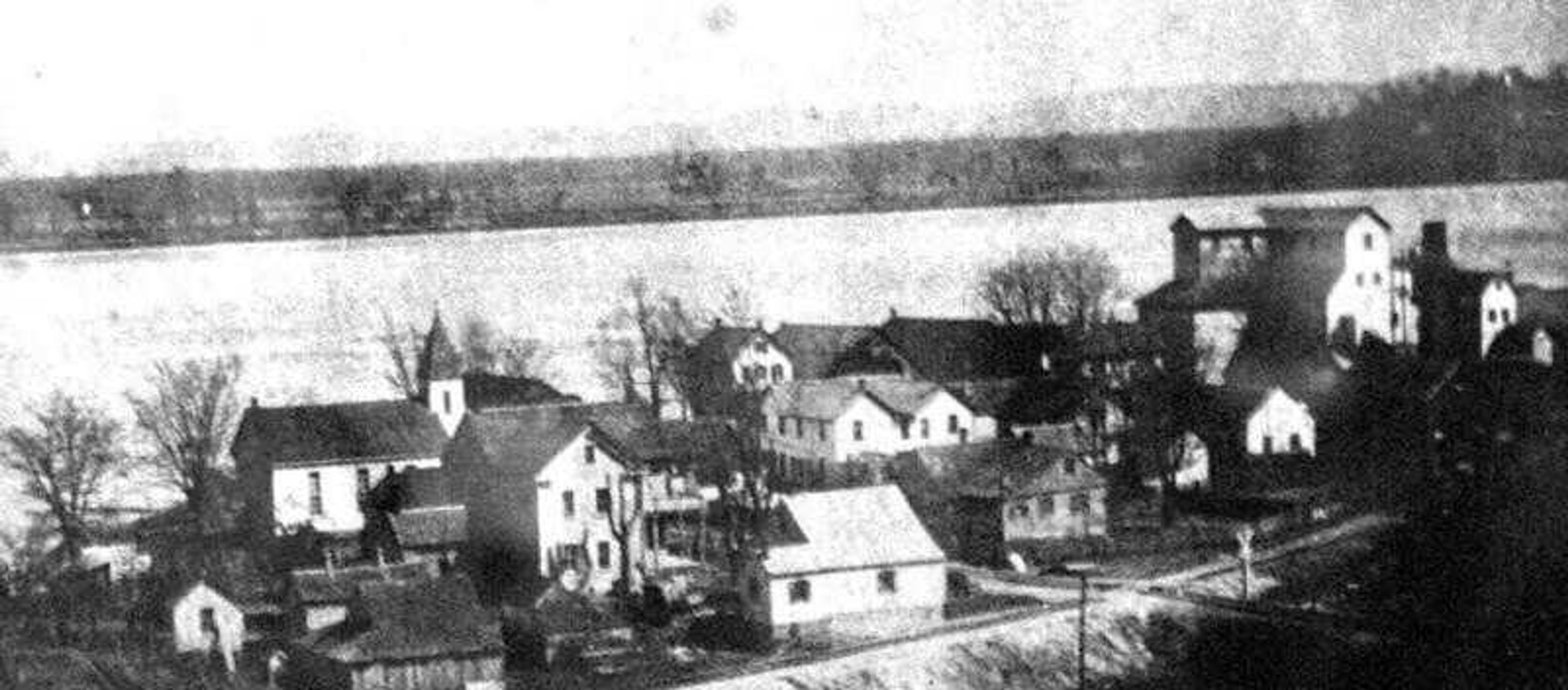Wittenberg: Nothing left but relics and memories
PERRY COUNTY, Mo. -- Behind the wheel of his white Buick, Robert Fiehler pauses a moment to point out the highlights of one of Wittenberg's finest neighborhoods. "That's where Earl Warren lived. And next door was Rudy Shotty. And that was Paul Lorenz's house," he says, indicating a patch of woods thick with small trees and brush...
PERRY COUNTY, Mo. -- Behind the wheel of his white Buick, Robert Fiehler pauses a moment to point out the highlights of one of Wittenberg's finest neighborhoods.
"That's where Earl Warren lived. And next door was Rudy Shotty. And that was Paul Lorenz's house," he says, indicating a patch of woods thick with small trees and brush.
Stone steps and rock foundations are pretty much all that's left of this Southeast Missouri town, which at one time had as many as 350 residents. Like so many river towns, its creation and downfall are both tied to the water of the nearby Mississippi River.

The headlines of old newspaper clippings are enough to tell the story: "Wittenberg tavern finally moves west." "Wittenberg's one-room school closes doors..." "Wittenberg Mayor wants out..."
In 1983, a Perry County Court agreed to residents' requests to disincorporate the town, which had a population of 5 people at the time.
Driving along the overgrown gravel streets, Fiehler can easily picture what used to be in place of the ghost town Wittenberg is today.
The 80-year-old World War II veteran stops his car in front of a pile of flat rocks and describes the popular brewery that once stood atop that foundation. Next door is the remnants of the former Wittenberg Post Office, its rusted sign still hanging over the door.
In 1973, the flood waters from Mississippi rose above that door, Fiehler explains.
That year's flooding only widened the cracks in the town's foundation. The first noticable signs of a crumbling economy began after a 1927 flood. After that, people moved away and businesses closed. First the furniture factory, then the two grocery stores, the flour mill, two hotels and the cooper shop. An even-higher flood in 1993 finished Wittenberg.
The town is one of seven founded by Saxon immigrants in East Perry County in 1839.
Strong family ties to the town prompted Mary Beth Mueller Dillon to recently publish a 300-page historical/pictorial book about Wittenberg.
Dillon inherited 200 glass-plate negatives that contained photographs of the town, some from as far back as the 1890s but most in the early 1900s. Using those photographs and others collected from residents -- 500 photographs total -- as well as record kept by a longtime Wittenberg teacher, Dillon compiled "Wittenberg, Missouri: In touch with the past."
Dillon, whose great-grandfather, grandfather and father all hailed from Wittenberg, will be at the Lutheran Museum in Altenburg on Saturday to sign copies of her book.
Like so many of the town's natives, Dillon doesn't see the vacant lots and overgrown streets when she visits Wittenberg.
"I see it as it is in my pictures," she said. "It's a really special place. I'm always anxious to go back, just like everybody else."
Pulling near the paved boat dock that lines the riverfront, Fiehler puts the Buick in park and stares out at the lazily flowing water.
He was in just about that same spot in the winter of 1935, when his father brought him to the riverfront to see the mighty Mississippi frozen over.
At the time he was only about 8 years old and Wittenberg was still home hundreds of people.
Fiehler says the town's fate was tied with improvement in roads that allowed people to travel to larger towns for employment. Most just never came back.
"It's like they always say, 'the big ones get bigger and the smaller towns get smaller," he says.
cmiller@semissourian.com
335-6611, extension 128
---
History of Wittenberg
* The settlement was established in 1839, when more than 500 immigrants from Saxony landed there. The group eventually formed the Lutheran Church-Missouri Synod.
* At one point, the town had as many as 350 to 400 residents.
* Floods in 1927, 1973 and 1993 damaged and destroyed many of the businesses and homes in the town.
* In 1969, Wittenberg's one-room school closed.
* In 1983, a Perry County Judge agreed to allow the town to disincorporate at the request of its five residents.
* In 1994, the Perry County Lutheran Historical Society, Inc., added a large marker to the spot where the Wittenberg Lutheran church once stood.
Connect with the Southeast Missourian Newsroom:
For corrections to this story or other insights for the editor, click here. To submit a letter to the editor, click here. To learn about the Southeast Missourian’s AI Policy, click here.










